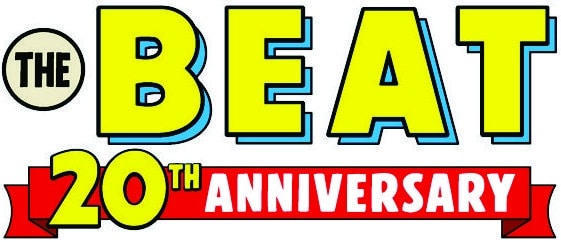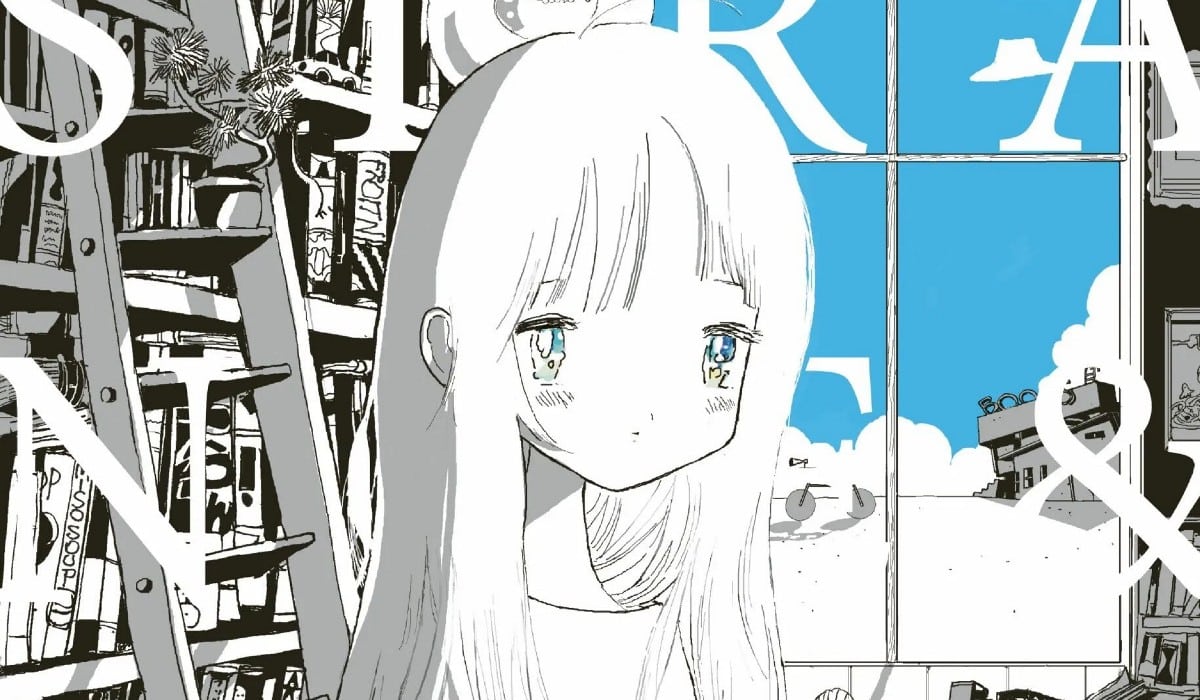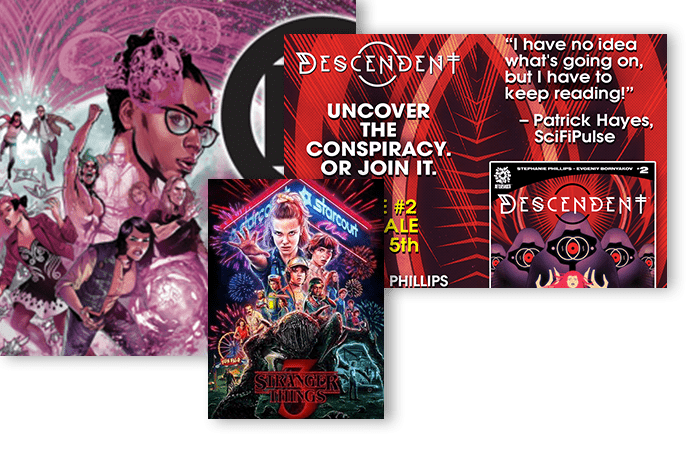With more people reading manga and Webtoons (aka vertical scroll comics) than ever before, Beat’s Bizarre Adventure gives three writers an opportunity each week to recommend some of their favorite books and series from Japan, Korea and elsewhere. This week we have angsty BL, the anniversary of an anime classic, and some strange and funky happenings.
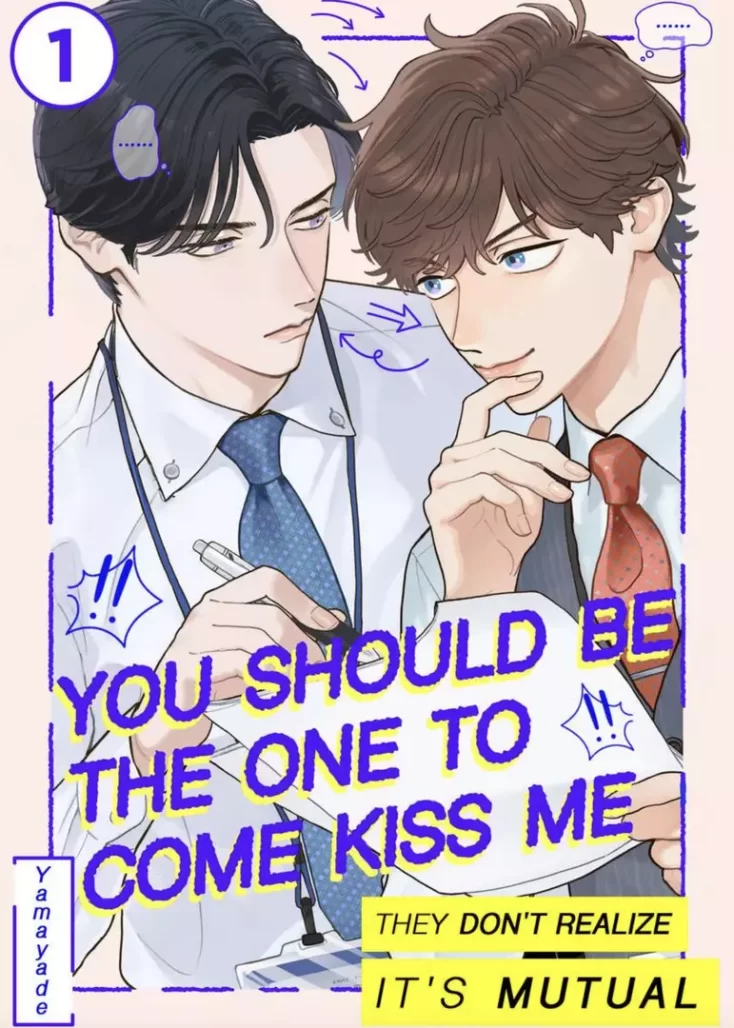
You Should Be the One to Come Kiss Me
Writer/Artist: Yamayade
Platform: Renta
I am a sucker for angst, be it light or heavy, because I know at the end of it all, I’ll be rewarded with a sweet ending. You Should Be the One to Come Kiss Me ticks that box for me. Written and illustrated by Yamayade, it’s a short Boys’ Love office manga that revolves around two colleagues named Kou and Eito.
Kou is cold and makes people quake in their shoes. Eito, on the other hand, is enthusiastic, extroverted, and always has a smile on his face, as befitting of a salesman. None of their coworkers know that the two are close friends and that Eito often stays over at Kou’s house. But the close proximity turns Kou’s heart into a mess. Even though he came out to Eito and made it abundantly clear that he wasn’t his type, he can’t help his heart fluttering. Little does he know that Eito has fallen for him as well.
I quite liked how straightforward Eito was in confessing his feelings to Kou. He didn’t beat around the bush and was naive and idealistic in the sense that he believed his feelings were enough to start a relationship. It wasn’t until he spoke to his coworker that he realized he didn’t consider the reason behind Kou’s rejection.
The story does fall into one of the pitfalls of BL stories where a previously “straight” person is now only “gay” for the love interest. Bisexuality is, for some reason, not a thing in BL. Still, the artist Yamayade does something I thought was surprisingly nuanced. Eito admits that he must not be straight because he fell for Kou. Then he asks himself, “does what I label myself even matter?” It’s a different, modern take of sexuality that is very rarely seen in BL.
Kou wears his heart on his sleeve even though he’s described as a cold and standoffish guy. While he doesn’t tell Eito the details of his past and why he had kept him at arm’s length, his confession is realistic and even ties into the title of the manga. — Hilary Leung

Eureka Seven: Gravity Boys & Lifting Girl
Original story: BONES
Writer: Dai Satō
With Additional Help From: Megumi Shimizu, Naruki Nagakawa, & Yusuke Asayama
Artist: Miki Kizuki
Translation: Toshifumi Yoshida
Adaptation:T. Ledoux
Lettering:Keiran O’Leary
Book Design: Tsuyoshi Kusano
Platform: VIZ Select
Eureka Seven recently celebrated its 20th anniversary. It’s wild this mecha series has been around for so long; I grew up watching it when it premiered on Adult Swim back in the day. It’s been my favorite anime of all time ever since. This week I wanted to honor it with a prequel manga that takes us way, way back to a time before the anime and its prequel video games.
Gravity Boys & Lifting Girl serves as a direct prequel to the two PlayStation 2 video games New Wave and New Vision. So there isn’t much overlap between this and the original anime with the exception of a few cameos. Instead this story focuses on the adolescence of the characters from the games, Sumner Sturgeon and Ruri Flame, as well as a whole supporting cast.
Though the series is short, coming in at just two volumes, there is a lot of meat on the bone here. The cast grows and changes exponentially; it feels like how real people change as they grow into adulthood. It could be argued some of the changes stretch personalities a bit. But considering the creative team was tasked with lining this up with the games, it was a difficult job no matter what. The best you can do in those circumstances is to make the story interesting.
One theme that has been consistent throughout the Eureka Seven is the sense of feeling lost as a child, anchored by decisions others made for you. Only as you grow up are you allowed the freedom of choice to be who you want. There are parts of this manga that haven’t aged well in that respect, but the theming is still ever present and a driving force of the story.
Please check this out if you can. It’s worth it. Then go watch the anime, or play some of the games. Make your own choices and be free. — Derrick Crow
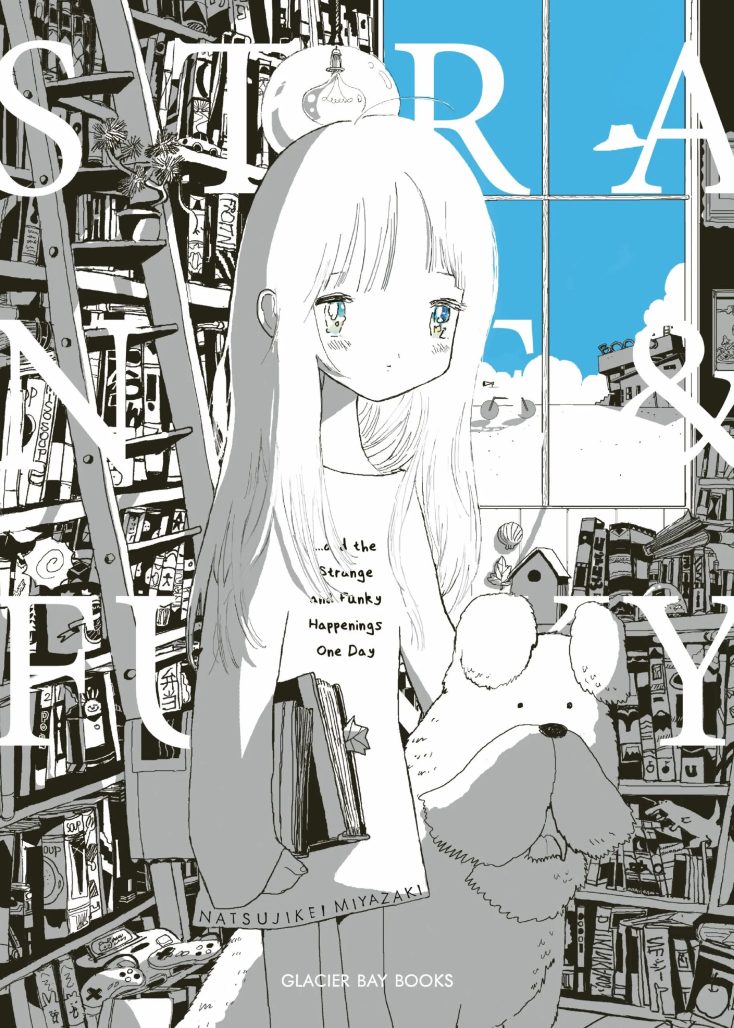
…And the Strange and Funky Happenings One Day
Writer/Artist: Natsujikei Miyazaki
Translation: zhuchka
Lettering: Tim Sun
Editing and Design: Emuh Ruh
Publisher: Glacier Bay Books
Natsujikei Miyazaki is a supremely talented comics artist. She’s also well regarded; per Glacier Bay Books head Emuh Ruh, her book with the SF publisher Hayakawa went through five printings. Yet the short story collection …And The Strange and Funky Happenings One Day is her first collection officially published in English, give or take a story in USCA English Edition. What took them so long?
Miyazaki does not fit the mold of what constitutes a “publishable” manga author in the United States. She specializes in short stories rather than long serials. Her tastes can’t be boxed into genres like “action” or “slice of life.” Her style is more manga-esque than the likes of Taiyo Matsumoto, but tougher to pin down than other short story artists like Dowman Seiman.
That said, there is a trick that she does indisputably better than anyone else. I call it “the Miyazaki pivot.” It goes something like this: an ordinary person undergoes a crisis. They bend under the strain. But then! Something truly absurd occurs. Cut to a two page spread as we, the readers, witness something ridiculous, cathartic, satisfying.
Miyazaki nails these transcendent moments as surely as Naoki Urasawa draws end-of-chapter cliffhangers and Junji Ito crafts jump scares. They only work because of how she draws. Her simple caricatures, and the vast yet cluttered worlds they inhabit, warp and twist under her line. A less talented artist would lose control. But Miyazaki’s drawings are always consistent, even when she executes pages nobody else could pull off.
…And the Strange and Funky Happenings One Day is like FLCL by way of Stanislaw Lem. If I have a critique it’s that the book is almost too rich. Each four and five page story defies your expectations with every page turn. It’s dense enough that I would recommend taking your time with this collection. Keep it by your bedside and read a story or two every night, like how you might approach The Little Prince. With the right expectations, I think any comics reader will find something to appreciate here. — Adam Wescott
Follow Beat’s Bizarre Adventure to get weekly manga and webtoon recommendations!
Read more great reviews from The Beat!
